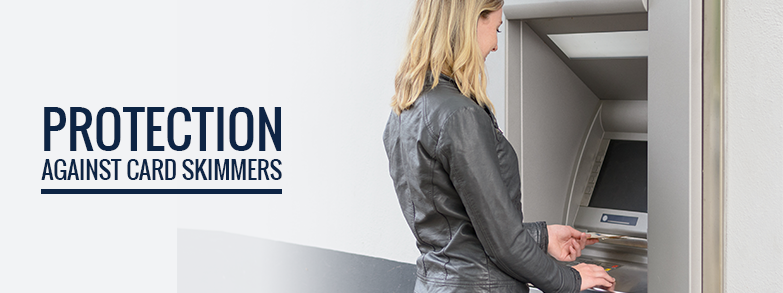Criminals are always looking for new ways to get into your bank account – and that can even mean placing tiny devices on ATMs, gas pumps and point-of-sale locations to glean your card data. These devices, known as skimmers, aren’t new but they’re becoming more popular: Police reported their use was up by 20 percent in the first part of last year when compared to 2016. Knowing how to spot one is your best protection against card skimmers.
What Are Skimmers?
Card skimmers are hardware that thieves affix to places you’d normally use your debit or credit card. They’re small enough to be unobtrusive and fit over the card slot on devices, allowing you to use the ATM or gas pump like you normally would. When you insert your card into the legitimate device, the card skimmer scans the magnetic strip, pulls your account numbers and stores them. Thieves later retrieve the skimmer, gather data and use your card information illegally.
Spotting a Skimmer
Criminals are getting more sophisticated about developing skimmers, so spotting them takes a sharp eye. When you use an ATM or a gas pump, start by scanning the device for signs of tampering – look at speakers, keypads and, of course, card slots. If colors don’t match up, graphics look “off,” or the device seems different from the last time you used it, don’t use it. If you’re using an ATM or gas pump with others nearby, compare them. If card readers or other elements appear different, move along to another location.
Protection Against Card Skimmers
While it’s getting increasingly difficult to spot skimmers, adjusting your behavior can minimize your risk:
- Wiggle test it. Wiggle card slots and keypads. If they feel loose, they may skimmers.
- Choose indoor ATMs: It’s harder for criminals to get to ATMs that are inside banks, grocery stores or other structures.
- Check the seal: Criminals need to physically open and insert a skimmer into gas pumps, so make sure security tape at its edges remain unbroken.
- Go chip, not mag stripe: If possible, choose an ATM that requires you to insert your card’s chip, rather than swiping a mag stripe. EMV chips keep your personal information secure even if the ATM is compromised.
It might be impossible to always detect skimmers, but being aware of the problem, as well as strategies that provide protection against card skimmers can go a long way toward securing your accounts.

